The world's largest telescope is being built on a mountaintop in Chile. It will be able to directly image rocky exoplanets. The Extremely Large Te
The world’s largest telescope is being built on a mountaintop in Chile. It will be able to directly image rocky exoplanets.
The Extremely Large Telescope -ELT- will be the world’s largest optical telescope, with a primary mirror that measures 128 feet (39 meters) across, reported Space.com.

The ELT is being built by the European Southern Observatory -ESO- in Chile at a cost of 1.3 billion euros (around$1.4 billion) and will be capable of detecting, and possibly even imaging, terrestrial planets in the habitable zones of other stars. The ELT is under construction atop Cerro Armazones, which is a mountaintop in Chile’s Atacama Desert. The mountain is about 12 miles (20 kilometers) from the ESO’s Very Large Telescope, which sits atop another Chilean mountain, Cerro Paranal.
Cerro Armazones was selected because of its excellent atmospheric and climatic conditions. Earth’s atmosphere is not friendly to astronomical observations, therefore, professional observatories such as the ELT are built on high mountaintops to get above as much of the atmosphere as possible, reported Space.com.

The sky above Cerro Armazones is extremely dry; there is very low precipitable water vapor content, resulting in an annual rainfall of just 4 inches (10 centimeters). Because it is far from towns and cities, Cerro Armazones is also exceptionally dark, with the only light pollution being from the city of Antofagasta, 22 miles (36 km) away.
The ELT’s primary elliptical mirror has a diameter of 128 feet (39 m). Rather than being a single slab of glass, it is made up of 798 hexagonal segments, each of which is 5 feet (1.5 m) across and 2 inches (5 cm) thick, reported Space.com.
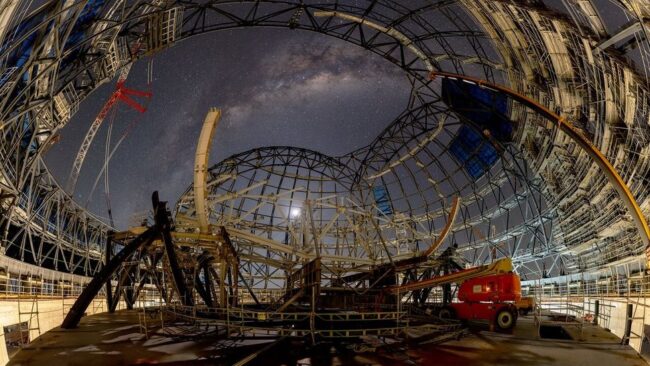
In addition to the primary mirror, which is designated M1, there are three other mirrors. The secondary mirror, M2, is 13.9 feet (4.25 m) in diameter. Schott described its production as a “huge challenge, requiring the grinding of raw material down to just 10 cm or 3.94 inches in thickness”, reported Space.com.
In the ELT’s optical design, light is collected by the primary mirror and reflected onto the convex secondary mirror, which bounces the light onto a 21.1-foot (3.7 m) tertiary mirror (M3) through a hole in the fourth, 7.9-foot (2.4 m) adaptive optics mirror (M4), which then receives the light when reflected back by M3. Finally, M4 redirects the light to a fifth mirror, which focuses the light for the instruments.
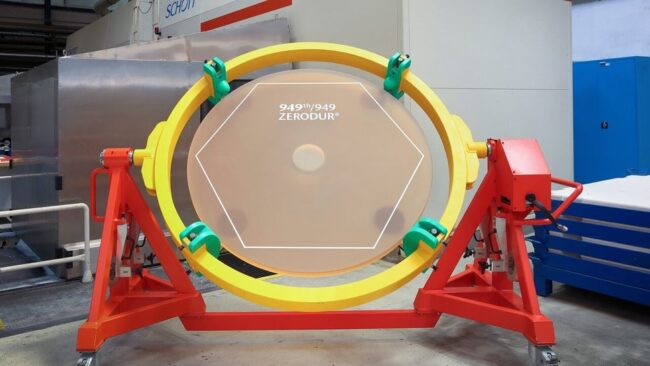
On its high perch, the ELT is above much of Earth’s turbulent atmosphere and water vapor, but it is not above all of it. This means its vision is still subject to atmospheric scintillation, which limits the telescope’s resolution to about half an arc second (an arc second is 1/3600 of an angular degree in the sky), no better than a good backyard telescope. To solve this problem, a technology called adaptive optics was invented and began to be used on large professional telescopes in the 1990s, reported Space.com.
Adaptive optics works by firing a laser into the sky to excite sodium atoms high up in the atmosphere, causing them to glow and create an artificial “star.” Computers then monitor the scintillation of this artificial guide star, and thousands of actuators move a telescope’s mirror by degrees of just nanometers, constantly changing the mirror’s shape to account for the twinkling and cancel it out so the view becomes crystal clear.
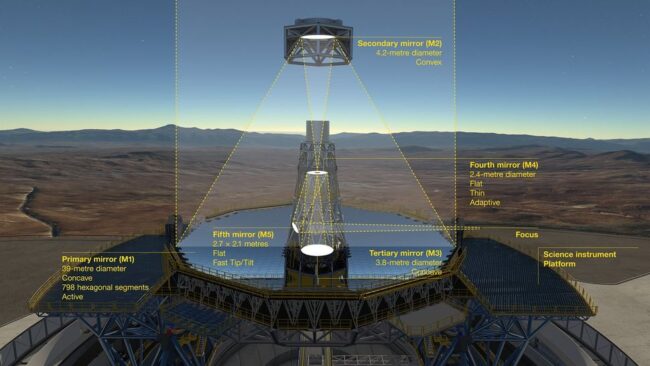
Although there are different telescope designs, they all work according to the same guiding principle: The larger a telescope’s mirror is, the more light it can gather. This means that the larger a telescope is, the fainter the objects it can see and the finer the details it can detect. At 39 m across, the ELT will be able to see fainter objects than any other optical telescope on Earth, in greater detail than any other telescope, reported Space.com.
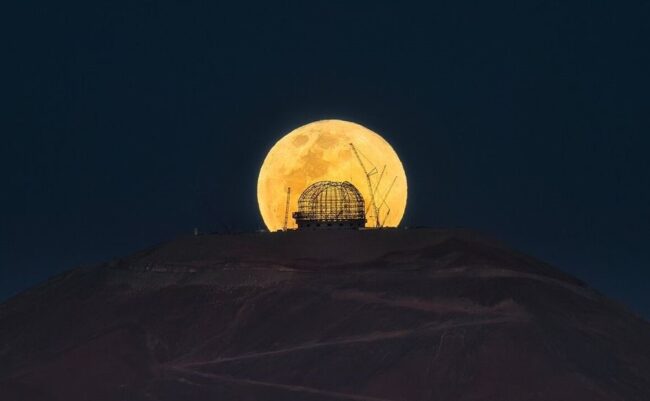
Compare this to the current largest single optical telescope in the world, the Gran Telescopio Canarias in Spain’s Canary Islands. According to the ESO, the ELT will gather 15 times more light than the Gran Telescopio Canarias and provide views 15 times sharper than the Hubble Space Telescope. The diameter of the ELT’s mirror is defined by its primary science drivers: to directly image terrestrial exoplanets, to characterize their atmosphere, and to measure the expansion of the universe, which is being accelerated by dark energy. It needs to be 39 m to accomplish these goals.
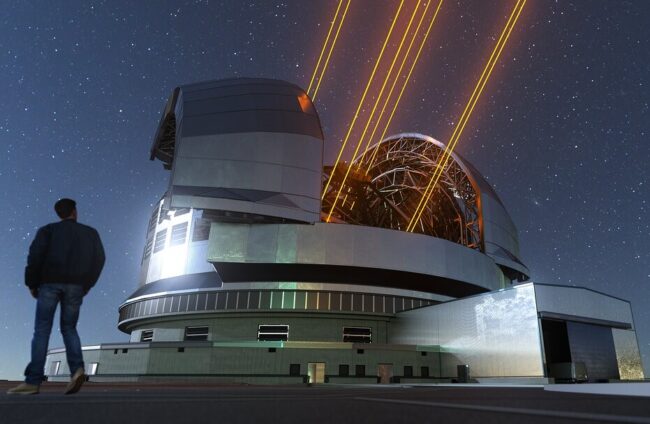
There are eight main science areas that the ELT will focus on:
- The solar system
- Exoplanets
- Stars
- Black holes
- Galaxies
- Cosmology
- Dark matter
- Fundamental physics
- And unexpected discoveries
First up is the ELT’s planned studies of the solar system. The ELT will probe the atmospheres of the gas giants, as well as study volcanism and cryovolcanism on the moons of Jupiter and Saturn. It will also capture the spectra of asteroids in the asteroid belt and distant frozen objects in the Kuiper Belt, reported Space.com.
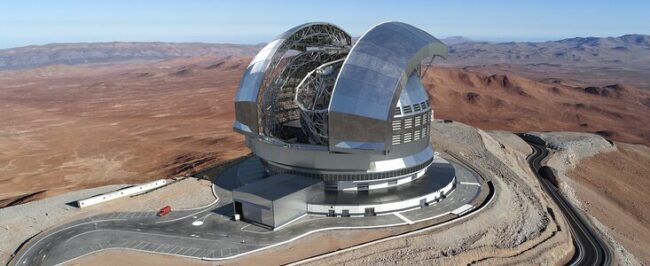
The ELT will also look at exoplanets. In addition to having a large aperture for imaging rocky planets in the habitable zones of their stars, it will spectroscopically characterize the atmospheres of these potentially habitable exoplanets, particularly those set to be discovered by the European Space Agency’s PLATO (Planetary Transits and Oscillations of Stars) mission, which is scheduled to launch in 2026.
The ELT’s Armazones High Dispersion Echelle Spectrograph (ANDES) will be capableof detecting biosignatures —water vapor, oxygen and methane— in the atmospheres of such worlds. The ELT will also be adept at studying planet formation in dusty disks around young stars and, with its Mid-infrared ELT Imager and Spectrograph (METIS), could even detect moons forming around planets, reported Space.com.
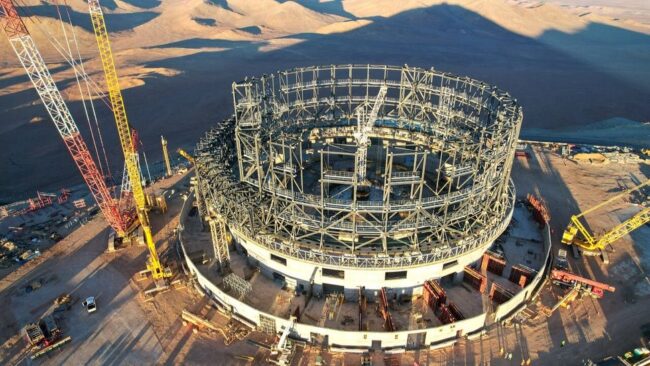
In addition, the ELT will probe star formation, not only in the present but also in the past, chronicling the star-forming history of the universe. The ELT website describes such measurements as “critical to understanding the link between dark matter and visible matter,” since dark matter draws in visible matter, enabling it to form stars faster. The ELT will also chase down supernovas and the sources of gamma-ray bursts, as well as study the chemistry, in the form of heavy elements, created by these stellar explosions, reported Space.com.
In particular, the ELT will seek to characterize Sagittarius A*, the supermassive black hole at the heart of our galaxy, using the orbits of stars that pass very close to the black hole.

The extremely high-resolution observations made by the ELT will be able to detect behavior in the expansion of the universe or in the light of stars and galaxies that might hint at new fundamental physics or evidence of changes in the behavior of the fundamental constants of nature, such as the speed of light and the proton-to-electron mass ratio. A lot of the ELT’s cosmological studies will be conducted with ANDES, reported Space.com.
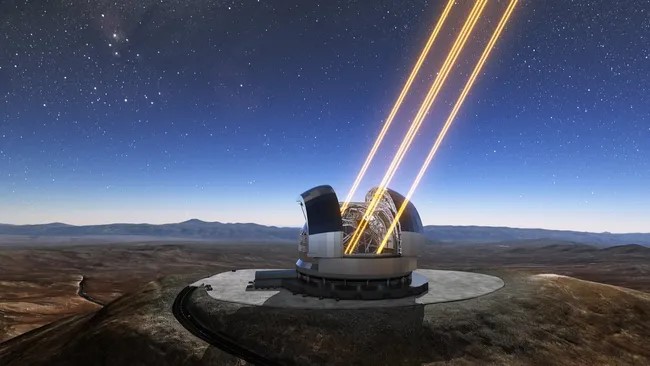
Finally, the ELT may make many unexpected discoveries. The telescope will be capable of seeing things no human has ever seen and of observing familiar objects in a level of detail never achieved. When scientists do this, they often discover new things that nobody ever expected, like the discovery of dark energy by astronomers using the Hubble Space Telescope in 1998 and the finding of hot-Jupiter exoplanets in 1995. Who knows what the ELT will discover?
The first stone of the ELT was ceremonially laid in May 2017, and construction on the giant passed the halfway point in July 2023. As of July 2024, the last segment of the primary mirror had been delivered. ESO’s timeline now plans on the mirror segments being installed by 2027 and first light being achieved by 2028. A period of testing, calibration and verification then needs to occur, with the aim to begin science operations by the end of the decade, reported Space.com.
All Credit To: Space.com


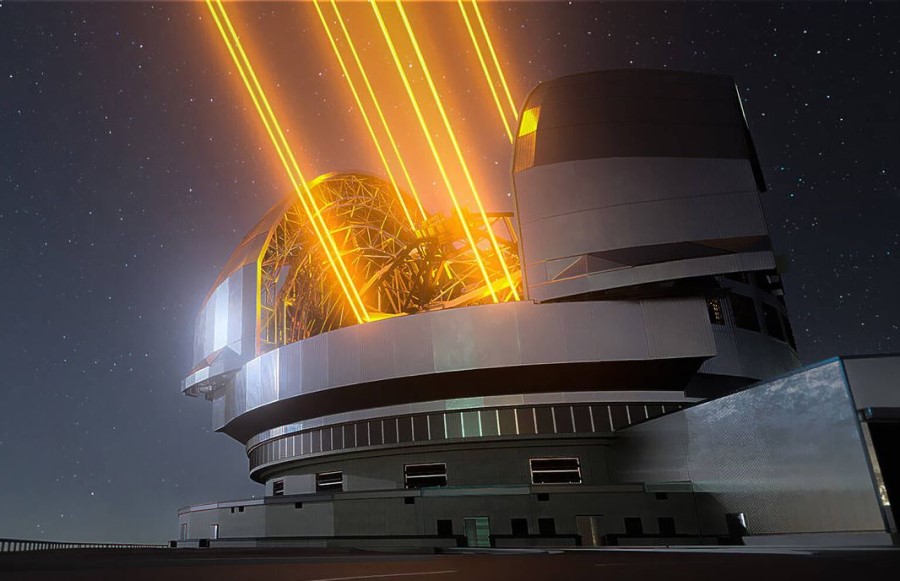
COMMENTS